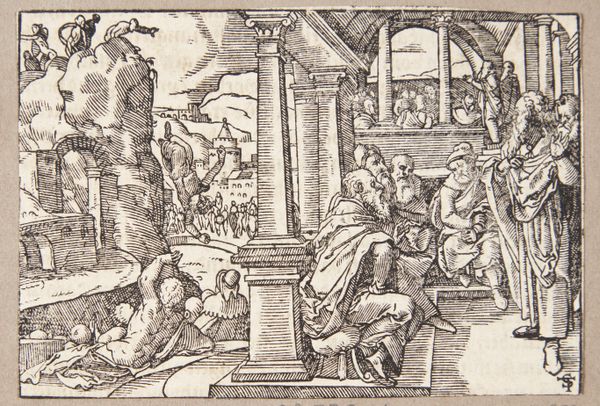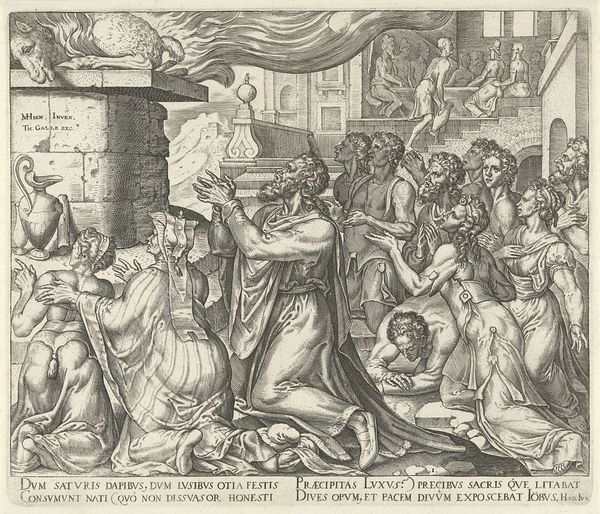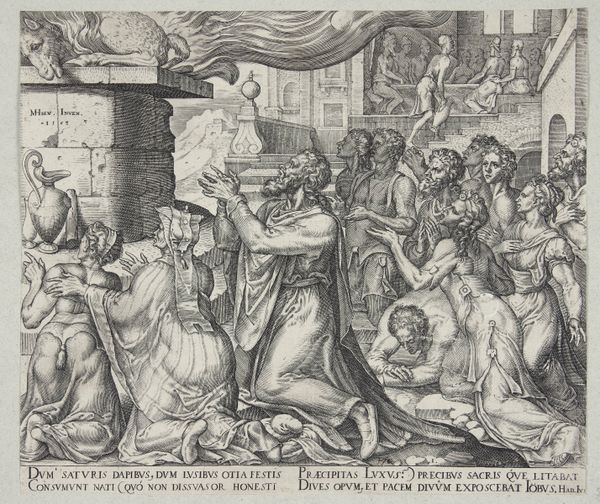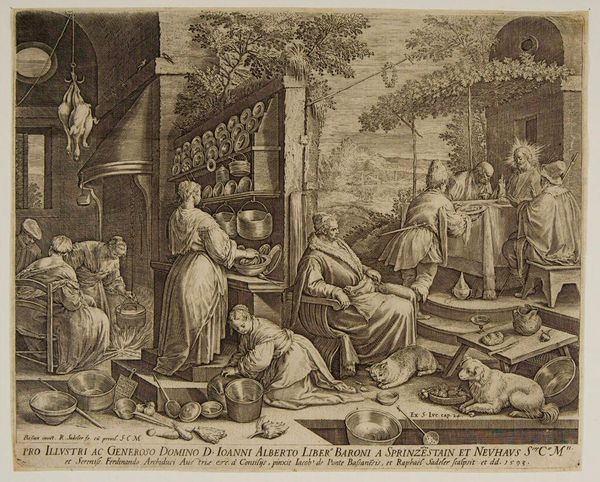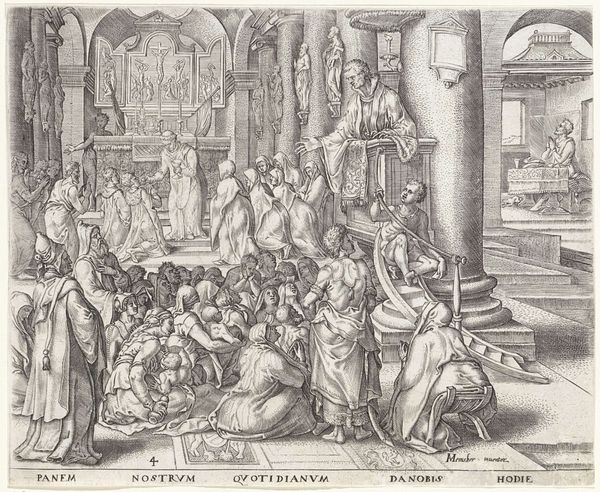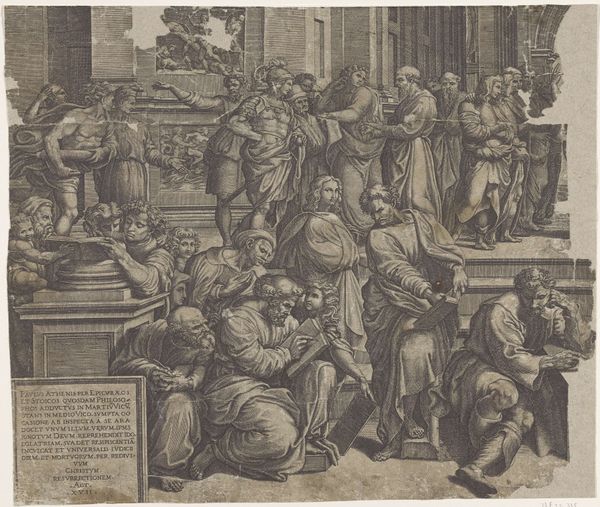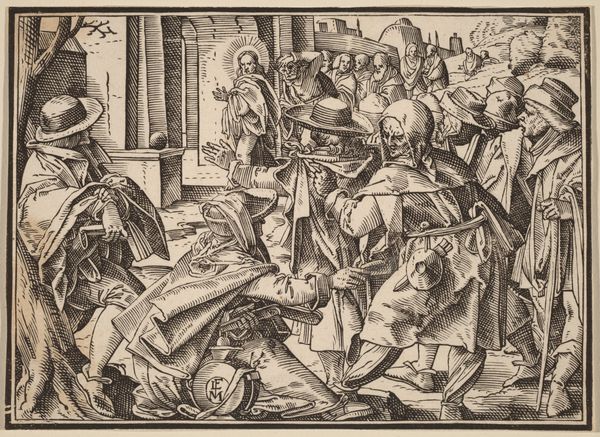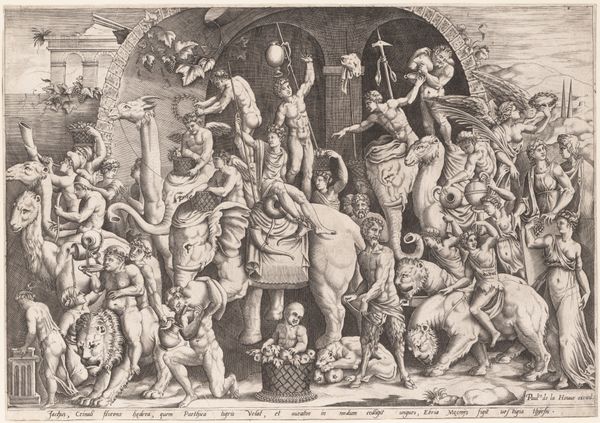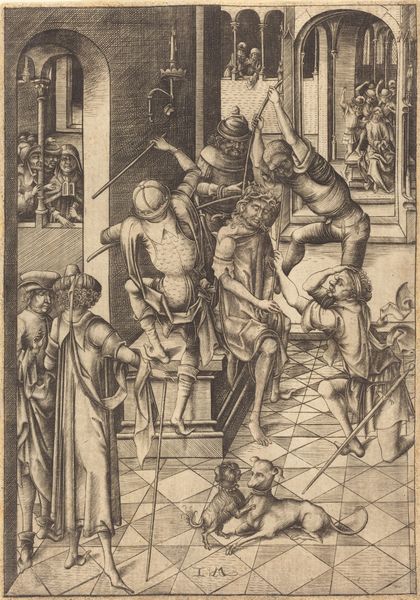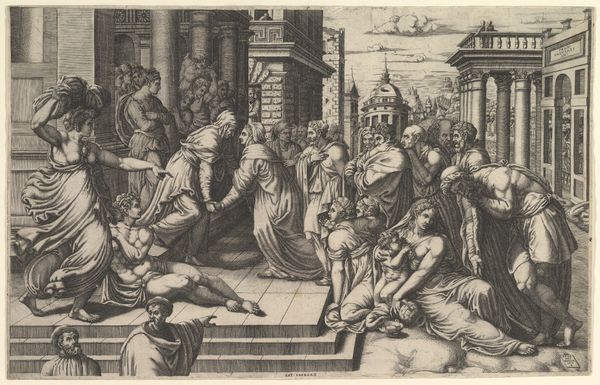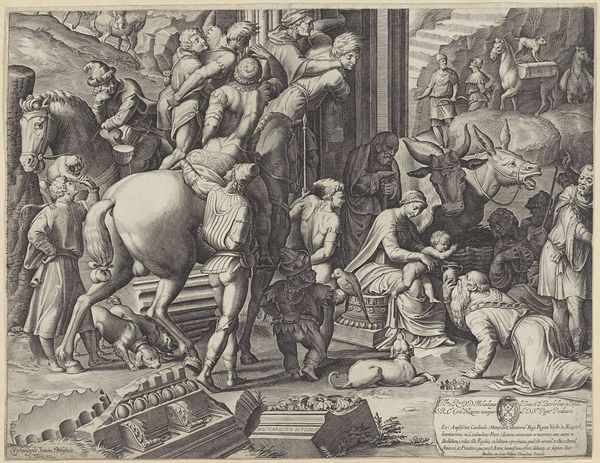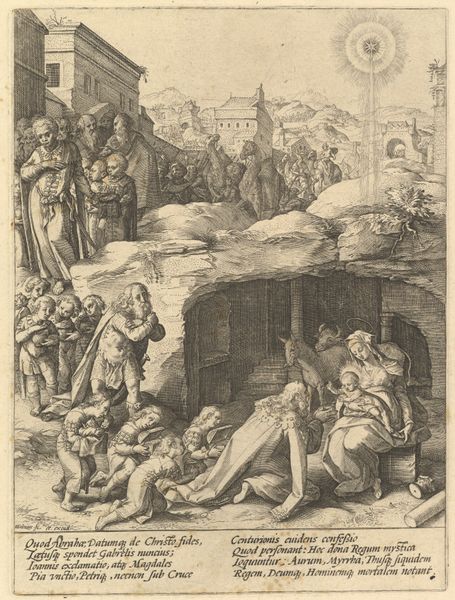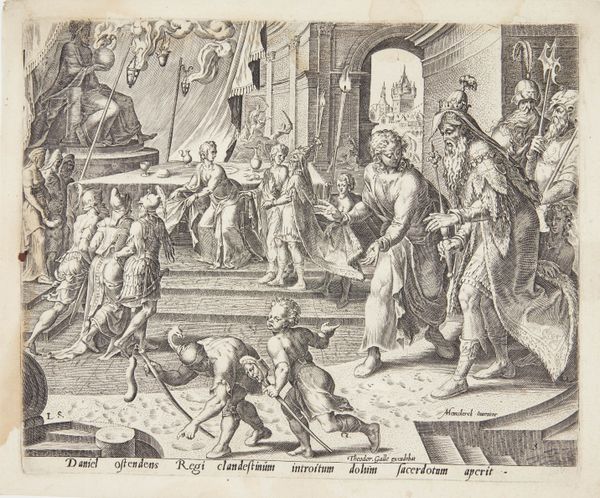
painting, oil-paint, wood
#
baroque
#
painting
#
oil-paint
#
mannerism
#
figuration
#
11_renaissance
#
oil painting
#
wood
#
painting art
#
genre-painting
#
history-painting
Dimensions: 102 cm (height) x 155.5 cm (width) (Netto), 181.5 cm (height) x 128.5 cm (width) x 11.5 cm (depth) x 43 kg (weight) (Brutto)
Curator: Look at this bustling scene! Here we have an anonymous painting dating from 1570 to 1670 entitled, "Christ Driving the Traders from the Temple." It’s an oil painting on wood, currently residing here at the SMK. What are your first thoughts? Editor: Overwhelming is the first word that comes to mind. Such chaos, almost a frenzied energy emanating from the canvas. I'm drawn to the architectural rendering. It seems as though this canvas might reflect the complex society of its period, referencing social, and possibly religious reform, during a time of social, political, and spiritual change. Curator: Absolutely, it appears this painting went through meticulous labor. When we delve into the materials, the pigments themselves tell a story, revealing potential trade routes and workshops involved in their creation. Look at the wood panel too – how was it sourced and prepared? All important considerations when examining this artwork’s socio-economic position. Editor: That's true, but I'm equally curious about the social commentary being made. The composition stages almost a literal battle between religious sanctity and commercial activity. And what about the figures themselves, what about how each class struggles against Christ's reform? Curator: Good point. Let’s discuss how it challenges conventional perceptions of the Baroque aesthetic. There are raw human realities on display, stripped bare of pretension. The canvas serves as a mirror, reflecting society’s contradictions without filters or idealization. What statement is this piece saying regarding the commercial industry during the 16th-17th century? Editor: Perhaps a reflection on the ongoing clash of sacred and secular authority that shaped cultural values? The depiction of Jesus confronts these traders is striking – his challenge to economic exploitation could resonate even today, as a form of spiritual resistance to oppressive structures of power. It begs the question: has the commodification of sacred spaces evolved since the period the artwork was created in? Curator: Well, examining this painting's physicality brings such questions to the fore, showing the impact material constraints had in the era, it provides a material testament of artistic intent during these crucial years of change! Editor: And by situating this historical narrative within a complex framework of intersectional analyses, "Christ Driving the Traders from the Temple" is brought into discussions that explore gender roles, socio-economic backgrounds, or class distinctions of each individual depicted within its space. Each character reveals new levels of reflection between present and past dialogues.
Comments
statensmuseumforkunst almost 2 years ago
⋮
The painting is one out of four almost identical Dutch paintings. The four paintings show Christ driving the traders from the temple and represent four versions of the same subject. These are stories about morality, illustrated through enigmatic scenes in and around the temple, all playing on messages about religious conflicts and the contrasts between rich and poor, the learned and the ignorant. All of it set within a multi-ethnic society that almost seems to prefigure our own. Bosch, Bruegel or? We do not know who painted the four panels. The materials and techniques employed point towards the two artists Hieronymus Bosch (circa 1450-1516) and Pieter Bruegel the Elder (circa 1527-1569), but at the time copying – of subjects and techniques alike – was widely practised. We cannot determine the true authors behind the paintings simply by looking at them, but the conservators can probe below the surface and help reveal the painting’s origins. In 2010 SMK began a study of the paintings together with Kadriorg Art Museum in Tallinn, Glasgow Museums, University of Glasgow and CATS to determine the four paintings' origins. The study of the paintings The study of the four paintings began on a ladder here in the Gallery. The Gallery’s version of the painting was carefully scrutinised alongside colleagues from Tallinn in order to compare details and painting techniques of the Copenhagen and Tallinn paintings. This first encounter grew into a collaborative effort across national borders and sparked off true detective work: a hunt for hidden stories and narratives hidden underneath the paintings’ “skin”. Illuminating art A wide range of specialists – conservators, scientists, and multi-media experts – have subjected the paintings to X-rays, infrared light, and UV light and carried out pigment analyses in order to reveal the paintings’ secrets and stories. Such modern technical studies allowed us to gain insights into the artists’ working methods, intentions, and workshop practices. Unearthing the paintings’ secrets What seemed at first glance to be four almost identical paintings turned out to be widely different. For each painting has its own story to tell when you delve below the surface. Even though they look similar and depict the same subject, the wood on which they are painted and the underdrawings underneath the paint all tell their own, unique stories. Explore the layers of the painting Click your way around the site using the links below and read about how the conservators worked with the various techniques and what they have discovered by using those particular methods. The main emphasis is placed on the painting owned by the Gallery. You can explore the three other paintings in greater detail on the project website.
Join the conversation
Join millions of artists and users on Artera today and experience the ultimate creative platform.

